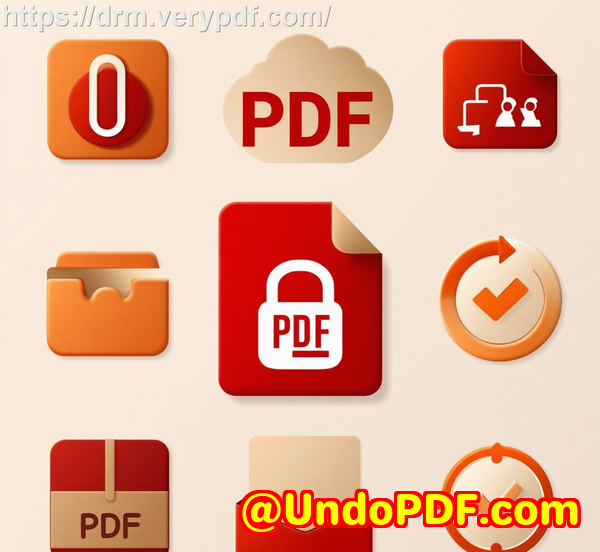How to Automate Secure PDF Sharing for Accounting, Legal, and Education Sectors Using VeryPDF DRM Protector
How to Automate Secure PDF Sharing for Accounting, Legal, and Education Sectors Using VeryPDF DRM Protector
Securely share and distribute PDFs in accounting, legal, and education sectors with VeryPDF DRM Protector for automated document protection and access control.

Every Monday morning, I used to dread the chaos of sending out confidential PDFs to clients and colleagues.
For accounting teams, legal departments, and even university administrators, managing sensitive documents is a constant headache.
Contracts, financial reports, student recordsthese files must reach the right people, but the fear of leaks, accidental forwarding, or unauthorised printing always lingered.
I knew there had to be a better way than password-protected PDFs or shared drives that anyone could copy from.
That’s when I discovered VeryPDF DRM Protector, and it completely changed how I handle document security.
Why VeryPDF DRM Protector Stands Out
At first glance, it looked like just another PDF tool. But once I started exploring, I realised its depth: it’s a complete secure document sharing system.
It’s perfect for accounting teams, legal firms, and educational institutionsanywhere sensitive PDF documents need controlled access.
Here’s what it brings to the table:
-
Secure online access: PDFs can be shared as a URL link rather than attached files, eliminating email forwarding risks.
-
Customisable access: Set expiration dates, viewing limits, or password protection per document.
-
Device and location control: Ensure that only authorised users on approved devices or networks can view documents.
-
Tracking and logging: Monitor who opens, prints, or views your PDFs, and from which devices.
The setup was surprisingly easy. Drag-and-drop upload, a few clicks to set access rules, and my documents were ready to shareno IT team intervention needed.
Core Features That Make a Difference
1. View Limits and Expiry Controls
I remember sending an NDA to a client that needed to expire after 7 days.
With VeryPDF DRM Protector, I just set the expiry date, and the system automatically revoked access after the set period.
No chasing emails, no manual follow-ups.
I could also limit the number of times a PDF was viewed or printed, which is a lifesaver when sharing financial reports.
Traditional PDF protections don’t offer this granularitypasswords can be shared, and anyone can print unlimited copies.
2. Dynamic Watermarks for Added Security
For legal documents, it’s critical that every print or screen share carries an identifier.
VeryPDF lets you add dynamic watermarks that include user names, email addresses, or timestamps.
I once sent a sensitive contract to a law firm, and the watermarks meant that if the PDF was printed or copied, the origin was traceable immediately.
This kind of accountability simply isn’t possible with standard PDF software.
3. Mobile-Friendly Sharing
Another huge plus is the mobile support.
Whether I’m on the road or my client is using a tablet, PDFs are easily viewable on any device.
Email invites even include QR codes, so documents can be opened instantly on a phone or tablet without complicated downloads.
4. Revoking Access Anytime
Mistakes happenan employee leaves, or a client shouldn’t have continued access.
VeryPDF allows me to revoke access instantly, either for a single user or for all recipients.
I’ve used this multiple times after sending drafts or confidential updates, and it’s reassuring to know the files can’t be misused.
How It Transformed My Workflow
Before VeryPDF, my mornings were a scramble: sending files, tracking emails, following up on downloads, manually checking if PDFs had been forwarded.
Now, I can upload documents in bulk, apply view limits, expiry dates, and device restrictions, and just monitor the dashboard.
For example:
-
Accounting reports: I set a 48-hour viewing window, so clients download financial statements securely and quickly.
-
Legal contracts: Each document is watermarked with the recipient’s name and email, preventing accidental leaks.
-
Education records: Student transcripts are accessible only on registered devices, keeping data compliant with privacy regulations.
I’ve also noticed that VeryPDF’s cloud-based system reduces dependency on emails and file servers.
Even sharing via USB is secure now, with offline DRM controls that keep documents safe in meetings or classrooms.
Compared to other PDF tools, which rely on simple passwords or untrackable links, VeryPDF gives total control over distribution and usage.
Why It’s Perfect for Accounting, Legal, and Education Sectors
Accounting Teams:
-
Protect financial statements from unauthorized sharing.
-
Track who viewed, printed, or forwarded reports.
-
Limit printing and downloads to prevent leaks.
Legal Firms:
-
Secure contracts, case files, and sensitive client documents.
-
Watermark every page dynamically.
-
Ensure compliance with confidentiality standards.
Educational Institutions:
-
Share student records, test results, and research papers securely.
-
Control device access and restrict network locations.
-
Automatically expire documents after a set time or number of views.
These controls are often missing in traditional PDF software, making VeryPDF DRM Protector a game-changer.
Cloud-Based and Offline Options
Another benefit is flexibility. Documents can be shared online via the Safeguard Web Viewer, or offline using USB drives with built-in DRM.
This makes it ideal for conferences, campus events, or client meetings where internet access isn’t guaranteed.
Even offline, every copy is device-locked, watermarked, and revocable.
My Verdict
After months of using VeryPDF DRM Protector, I can say this: it removes the stress of document security for accountants, lawyers, and educators alike.
It’s not just about preventing leaks; it’s about tracking, controlling, and automating access so your team can focus on real work.
I’d highly recommend this to anyone who deals with large volumes of PDFs and wants peace of mind.
Start your free trial today and see how it simplifies secure PDF sharing: https://drm.verypdf.com/
Custom Development Services by VeryPDF
VeryPDF offers tailored development services to meet unique technical requirements.
Whether you need PDF processing tools for Windows, macOS, Linux, or servers, or want custom utilities using Python, PHP, C/C++, JavaScript, .NET, iOS, Android, or HTML5, VeryPDF has the expertise.
Services include:
-
Windows Virtual Printer Drivers for PDF, EMF, and image formats
-
Printer job capture and monitoring
-
System-wide API hooks for Windows
-
OCR, barcode recognition, and table extraction
-
Document and report form generators
-
Cloud solutions for document conversion, viewing, and digital signatures
-
PDF security, DRM, and document printing controls
Contact VeryPDF for custom solutions here: https://support.verypdf.com/
FAQs
Q1: Can I set a PDF to expire automatically after a certain number of views?
Yes, VeryPDF DRM Protector allows you to set documents to expire after a specific number of views, days, or prints.
Q2: Is it possible to revoke access to a document after it has been shared?
Absolutely. You can revoke access for individual users or all recipients instantly.
Q3: Can my clients view protected PDFs on mobile devices?
Yes. The platform is mobile-friendly, and email invites even include QR codes for easy access.
Q4: Are watermarks customizable?
Yes. Dynamic watermarks can include user name, email, company, date, and time to prevent unauthorized sharing.
Q5: Can VeryPDF DRM Protector work offline?
Yes. The Safeguard Portable option allows secure document sharing via USB drives without internet access.
Tags / Keywords
-
secure PDF sharing
-
PDF DRM protection
-
document access control
-
legal document security
-
accounting PDF automation
-
education PDF privacy



